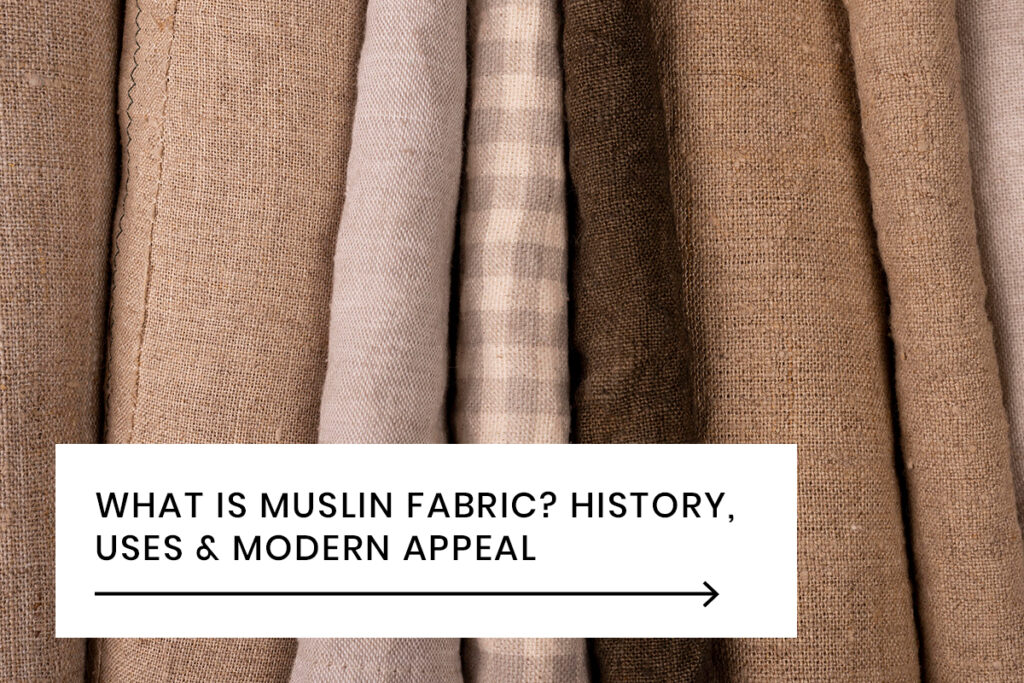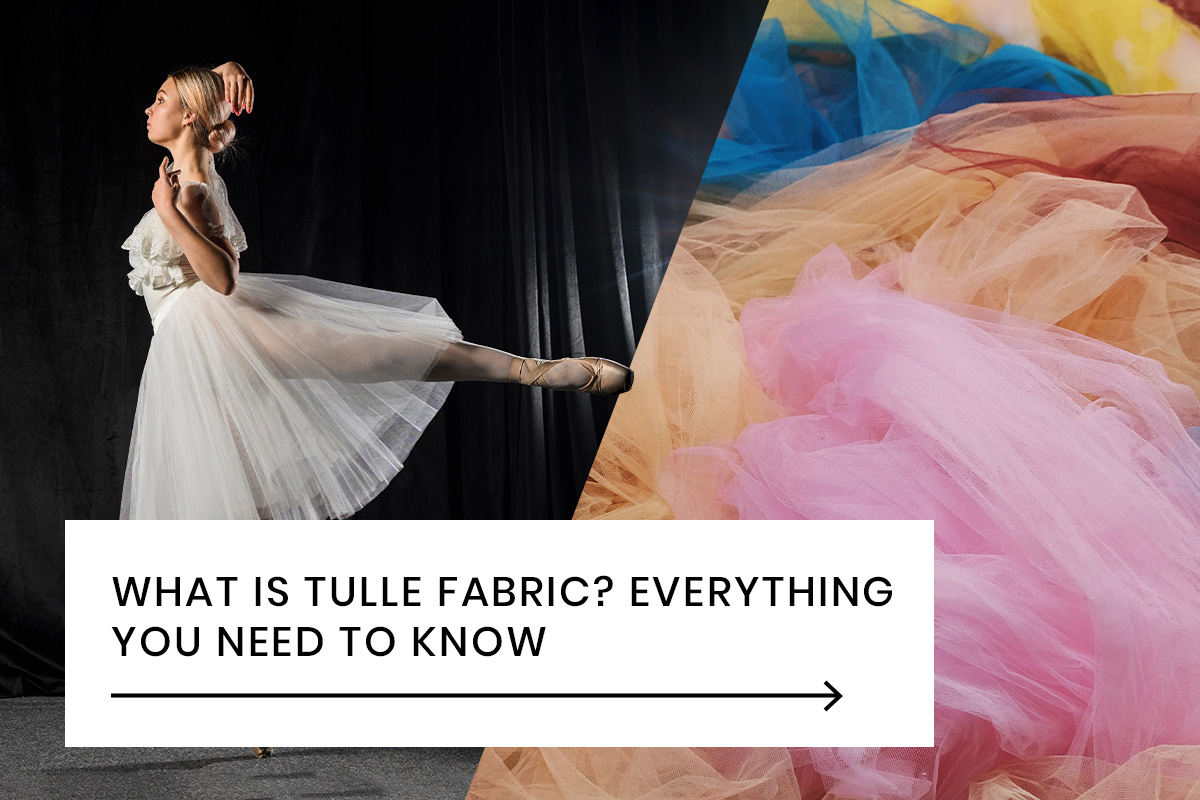Introduction
Muslin is a lightweight, breathable, and airy fabric – the perfect accompaniment for summer! Muslin is typically made from natural fibres like cotton, allowing for lots of airflow, which will keep you cool and comfortable on those hot summer days. Due to its versatility, muslin is a great fabric for summer tops and dresses, since it acts as a breezy layer, stylishly protecting you from the sun’s rays.
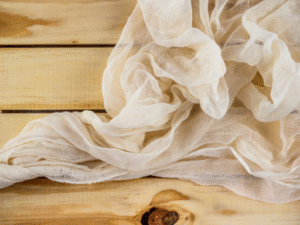
Additionally, muslin fabric has an incredible history! Muslin originated in ancient India, as a woven fabric known as Bengal. Muslin saw a large following in Europe, especially during the time of the Mughals, before it was produced under British rule, which halted its cultivation. Recently, West Bengal and Bangladesh have made efforts to revive muslin and integrate it with contemporary textiles.
In this blog, you will learn everything you need to know about muslin fabric, including its rich history, the characteristics of muslin, the many types of muslin offered in the marketplace, the key benefits and drawbacks of muslin, and how it is used in fashion, the home, baby products, and much more. At the end of this blog, you will have the time to understand the uniqueness of muslin compared to other fabrics, how it compares to cotton, and whether it will work for you.
What Is Muslin Fabric?
Muslin is a cotton fabric, plain woven, and produced in a variety of weights. It is a firm, medium to heavy (width) weight plain weave cotton fabric, made in various qualities. The best qualities of muslin are fine and smooth to the touch, woven from evenly spun warp and weft yarns. Muslin is also finished as a soft finish, bleached or piece dyed, and it can be patterned on the loom or printed.
Typically, muslin is either an unbleached or white cloth, or is created from carded cotton yarn. Muslin is most often used to create practical sewing patterns, such as clothing, curtains, or upholstery. Muslin clothing is also suitable for hot, dry climates as air can flow through muslin easily.
History of Muslin
- Muslin is a timeless staple cotton cloth, and the original muslin was made in Mosul, Mesopotamia (Iraq), and is named for that city. During the Middle Ages, “muslin” was used to specify coarse, heavier cottons made in Mosul. India began to produce many types of fine cotton muslins, which sometimes were printed with gold and silver leaf. For a very long time, muslins, in all their varied beauty, were imported into European countries, and the first made in Europe was thought to be in Paisley, Scotland, circa 1700.
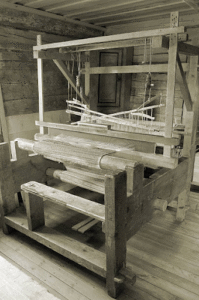
- In the great 1851 Exhibition of London, Dhaka Muslin was prominently placed; it caught the attention of many visitors, and the British press reported that the marvelous Muslin Fabrics from Dhaka had taken the prize as the best usable fabric of the day.
- The legendary Dacca muslin, which was made of the local phooti cotton grown on the western bank of the Meghna River in now Bangladesh, completely bewilders any myth that long-staple cottons are a superior reason to choose any fabric, for the extraordinarily delicate and plain-weave mulmul was so fine that it was said that it could be pulled through a ring, and was often described as “woven air”. It is remarkable that we still have artisans with expert hands capable of spinning and weaving this famous fabric.
Origin of the word ‘Muslin
- It is unclear the origins of the word Muslin. Some believe that it is derived from an old trading center in Iraq called Mosul, where these textile exports to Europe, including Muslin, occurred from the Middle East in the 18th century, whereas others tie Muslin to Musulipattam, which was at times the headquarters of European trading companies in southern India. The East India Company built its first factory in India in Masulipatnam. In the 17th century, it was a port for French, British, and Dutch trade. The fabric itself, however, was originally manufactured in Bangladesh and some areas of eastern India in the state of West Bengal.
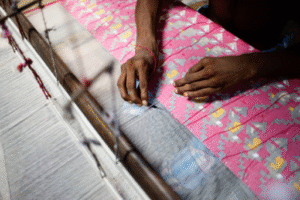
-
- Muslin is neither a Persian word, nor a Sanskrit word, nor a Bengali word, so the original Muslin was probably cotton cloth exported by Europeans from Mosul, and through Mosul from other eastern origins, into Europe, and when they eventually saw the fine cotton textiles of the Dhaka region, they assigned Muslin to Dhaka textiles. It seems hardly likely that somehow the Muslin association originated with textiles made in Dhaka. The term Muslin was introduced to textiles by Europeans, not only Cotton textiles from Dhaka, but all cotton textiles imported from other regions of India, in places such as Gujarat, Golconda, and others, also utilized the term Muslin.
- This fabric was first produced during the Mughal period in India and was so exquisitely luxurious that only the Queens and wealthy women of India wore these smooth 6-yard sarees. The British destroyed this art under their rule to repress the highly coveted muslin. However, Indian scientists have recently rediscovered the secret of producing muslin and have resumed Muslin production. Now, weavers from Bangladesh and eastern India have started making Muslin sarees as their ancient ancestors did hundreds of years before them.
- For several thousand years, muslin has been marketed throughout the world, a luxury item, often valued equally with gold. Mahatma Gandhi, during the Indian independence movement, began spinning his yarn to produce khadi, a sort of very fine muslin, to enhance freedom and to directly organize a nonviolent struggle against the British.
Types of Muslin Fabric
There are many types of muslin fabric, each with its own set of features, textures, and purpose. These types can be grouped by the quality of the muslin fabric, how it’s finished (bleached or unbleached), weave variety, and their historical context. Below is a comprehensive overview:
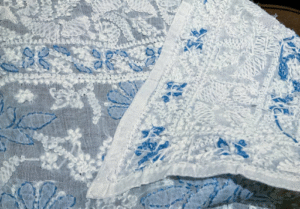
1. Based on Quality
Muslin quality can vary depending on the fine yarn and type of weaving:
- High-Quality Muslin: The best quality muslin is one that is ultra-soft, ultra-smooth, and uniformly spun.
- It is breathable and great for lightweight and delicate applications, such as luxury fashion or fine garments.
- Low-Quality Muslin: Low-quality muslin has a bigger texture due to the uneven yarns. It is more inexpensive than high-quality muslin, slightly stiffer, heavier, and mostly used for utilitarian purposes such as backdrops, quilt muslin, or craft work.
2. Based on Finish: Bleached vs. Unbleached
- Muslin may also be categorized based upon how it has been finished:
- Bleached muslin: Chemically treated to remove impurities in the fabric while whitening the results. Bleached muslin will always present as extremely smooth and bright white. Great for anything professional or high-end garments, blankets, and home decor.
- Unbleached muslin: 100% natural – untreated, slightly “off-white” in color, lightly textured. Unbleached muslin is preferred for tracing patterns, upholstery backing, or someone who practices conscious sewing or sourcing.
3. Modern Weave-Based Varieties
The following are the common types of muslin that can be found in the textile industry today:
- Gauze Muslin: lightweight, translucent, and almost sheer. Meant to be used in wound dressing pads, culinary filters, baby wraps, and summer apparel.
- Mull Muslin: Soft, plain-weave cotton or cotton/silk blend muslin used for fashion draping, practicing patterns, and lightweight linings.
- Swiss Muslin: lightweight, small dotted or raised textured patterns. Slightly heavier muslin is popular for breezy yet warm garments.
- Sheeting Muslin: Thick coarse muslin for use in upholstery, theatrical backdrops, or to cover stuff behind hardware in the household.
4. Traditional and Historical Muslin Varieties from Dhaka
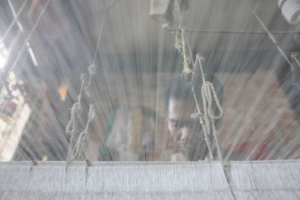
These beautiful muslins, formerly valued throughout the world, contribute cultural significance and meaning to the identity of the fabric:
- Malmal (or Malmal Khas): The finest muslin from phuti cotton, often worn by royalty. Fine to the extent that a 6-yard-long sari could pass through a ring.
- Jhuna: Very sheer, very lightweight muslin, worn by traditional dancers.
- Rang: Almost netted muslin, extremely transparent.
- Abirawan: Flowing like running water; poetically appealing.
- Khassa: Muslin woven very finely and with elegant style.
- Shabnam: As delicate as morning dew.
- Alaballee: Superfine muslin, remarkable softness.
- Tanzib: It is worn like an ornamentation, often wrapped around the body.
- Nayansukh: “Pleasure to the eyes”, known for its beauty.
- Buddankhas: A very rare and special variety.
- Seerbund: Used solely for a turban.
- Kumees: Made into fine shirts.
- Doorea: Defined by stripes.
- Charkona: Woven in checkers.
- Jamdani: A woven work of art with intricate inlaid figures on top of a muslin base. It is often called the crown jewel of figured muslins, as it combines Iranian designs with Indian craftsmanship
Characteristics of Muslin
Muslin has global recognition for its minimalist simplicity and practical functionality. Muslin can be found as a lightweight wrap and a historical family heirloom that retains characteristics and features unique to itself. Let’s explore the signature characteristics of muslin:
1. 100% Cotton
Genuine muslin is 100% cotton, and therefore, 100% breathable and sustainable. As a naturally soft cotton fabric, muslin is suitable for sensitive uses, including but not limited to: baby clothing, medical dressings, and everyday garments.
2. Excellent Absorbency
Muslin, as a cotton fabric, has a naturally absorbent nature and is an excellent choice for climates with high humidity. Muslin quickly absorbs perspiration on skin to allow moisture to evaporate, keeping the skin dry and cool.
3. Hypoallergenic and Skin Friendly
Muslin is smooth on skin and free from synthetic irritants. It makes an excellent choice for sensitive skin and allergies, while synthetic fabrics, for example, polyester, can cause rashes or allergies.
4. Strong despite Its Softness
Softness does not equate weakness; muslin is wonderfully strong. Muslin can endure pulling, stretching, and washing without losing its shape to be effectively used over and over in applications such as kitchens, hospitals, and sewing.
5. Ultra-Light and Airy
Muslin is one of the lightest fabrics, with a barely-there feeling. In the past, fine muslin sarees could be folded into matchbox-sized pieces! Today, while market muslin doesn’t have the legendary 2000-plus thread count of ancient Dhaka muslin, the common 100 thread count is still thinner, lighter, and more breathable than most fabrics.
6. Soft & Smooth Feel
Muslin, made with plain weave, has an inherently smooth and soft feel. Muslin has good drape, allowing it to lie nicely, which has made it favorable for layering in fashion or using as underlining in garments.
7. Little Shrinkage
Muslin often shrinks a little—between 5% – 10%, usually after the first wash. Using cold water and fabric softener will help prevent excess shrinkage and cause the fibers to become unbound and refurbished to get shape and finish.
What Is Muslin Cloth Used For?
Culinary and Kitchen Uses
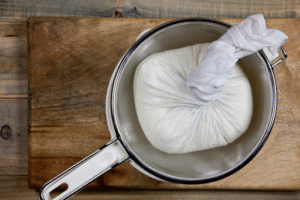
- Wine Filtering: When muslin is used in a funnel, it acts like a natural sieve by preventing sediment from passing into decanters when transferring wine or port.
- Juice Extraction: A muslin is great for juicing at home – just pour your mashed, boiled fruit into a muslin bag and suspend it over a vessel to allow the pulp to drain out and keep the clear juice.
- Cheese-Making: Muslin is often used when cheese-making at home in order to drain liquid or whey from the curd. The curd is wrapped in muslin and pressed between plates or weighted down with a heavy object in order to remove moisture completely.
- Holiday Cooking: Traditionally, muslin is used to wrap Christmas pudding, allowing the pudding to steam slowly and deliver fine flavor and texture.
Beekeeping
- Wax Purification: Beekeepers often use muslin to filter the melted beeswax. Once heated, a muslin material can filter out debris and particles, so the beekeeper is left with fresh, clean wax to make molds or sell to the public.
Theatre, Photography & Film
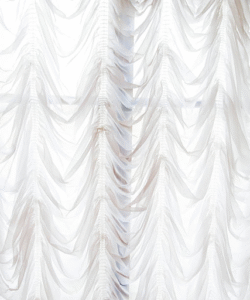
- Stage Scenery: Muslin is the primary material for theatrical sets. It takes paint very well and, when treated, can be slightly see-through. Changes in coloring and texture can allow for lighting effects or mood changes for the stage.
- Night Scene Creation: Muslin’s absorbing qualities make for a textured, wavy finish that allows conversion of daytime sky-like creations into something darker, great for dusk or nighttime only backdrops, effects, or mood shifts on stage.
- Green/Blue Screen Alternative: Muslin is frequently employed in video production, often as a cost-effective and removable chroma key background, most commonly pre-dyed muslin or hand-painted muslin with diluted latex paint.
- Portrait Photography: You could not go wrong if collaborating with muslin as a backdrop, most often hand-painted with depth effects of mottled or gradient tones in order to establish effective portrait depth.
- Old Film Lighting: Back in the days of the silent film, large sheets of muslin would often be hung above on many outdoor sets to diffuse sunlight, creating a soft natural light when inside.
Medical and Surgical Uses
Neurosurgery Reinforcement: Muslin gauze is utilized during special brain surgeries; the gauze is simply wrapped around the aneurysm or a fine intracranial artery. Providing support-strength to the wall of the blood vessel, and restricting the chance of rupture in complicated surgical cases when other means, such as “clipping,” will not work.
Fashion and Clothing
- Design Mock-ups: Muslin is widely used by designers throughout the fashion, as a mock-up or prototype fabric for design. Effectively enabling designers to form and fit the garment before cutting into a costly fabric.
- Lightweight Clothing: Muslin is often tender and very breathable, making for realistic clothing, especially summer clothing like dresses, shirts, and tunics.
- Boho Bride: Brides will often look for a light, airy wedding dress, which often has a muslin option for the wedding dress, overlays, and veils.
Home Furnishings:
- Curtains and Drapes: Lightweight muslin is perfect to create sheer curtains or drapes that provide airflow and softening of natural light.
- Pillows and Upholstery: Muslin is often used to create cushion covers or as an inner lining in upholstery, helping to provide a smooth and soft finish to furniture.
Baby Essentials:
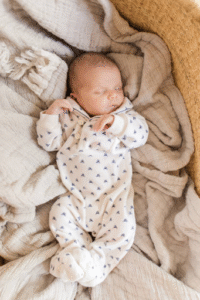
- Swaddles and Bibs: The breathable, hypoallergenic nature of muslin makes it a popular choice for baby wraps, bibs, baby burp cloths, and baby onesies.
Crafts and Textiles:
- Art & Quilting Projects: Crafters use muslin as base fabric for embroidery, fabric painting, quilting, and even as stabilizer in sewn projects. It provides a smooth surface to be able to work easily.
- Eco-Friendly DIYs: As sustainability is rising, organic muslin is being used more in handmade, upcycled, or packaging products as a biodegradable alternative.
Accessories and Styling:
- Scarves and Shawls: Its soft, airy quality makes muslin a pleasant fabric for scarves and wraps, especially in warmer climates.
- Tote Bags and Pouches: Muslin is a lightweight, yet strong fabric choice for eco-friendly handbags or reusable grocery totes.
How Is Muslin Fabric Produced?
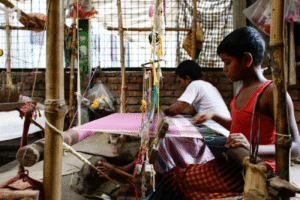
Muslin fabric has a long history and originates in India and the Middle East and was introduced to Europe in the 17th century. It is recognized by its fine, plain weave and has been embroidered with gold and used globally. It is still used widely.
Step-by-Step Production Process:
1. Field to Factory
- Muslin is made from mature cotton bolls. The mature bolls can be harvested by hand (faster and cleaner) or by machine (faster – but has seeds).
- The cotton is cleaned with a cotton gin, which removes all the seeds, and then it is pressed into bales. The bales are short in length and weigh, which allows longer storage.
2. Bale to bobbin
- The bales of cotton are then carded to align the fibers all in one direction.
- The cotton is then spun into strands of thread. This was done by hand – now the machines handle this. Once spun, the threads are wound onto bobbins for weaving.
3. Weaving the muslin
On a loom, the warp threads are going to be laid vertically and strengthened with starch. The thread in the shuttle is going to weave horizontally, and this is called the weft, which creates the plain weave pattern with the same warp and weft.
This simplicity is essential because the plain weave allows slight amounts of air to move through the fabric and gives it a very smooth texture.
4. Thread Count and Strength
- Muslin typically has a thread count of less than 180, which gives it a weight but is still strong.
- Higher thread counts mean finer fabric—used for luxury variants like a 500-count muslin.
5. Finishes
- Muslin can be sold unbleached (natural cream) or bleached for whiteness.
- Most wash it before first use to remove stiffness and in part, to reduce shrinkage.
Can be easily dyed or painted, muslin is used for fashion draping, theatre backdrops, in photography, and as a test fabric before using expensive textiles.
Advantages of Muslin Fabric
- It is perfect for clothing and newborn accessories.
- Keeps you warm in winter and cool in summer.
- Muslin is durable, hearty, and low-maintenance.
- It is inexpensive, eco-friendly and made of natural fibers.
- Easily takes dye.
- Has antibacterial properties and is mild to the skin.
- Super adaptable to many applications.
Disadvantages of Muslin Fabric
- Requires frequent steaming or ironing, as it wrinkles easily.
- It will shrink when washed, watch for this!
- Sheer light muslin may be see-through and will require lining for some clothing.
- Does not maintain structure well and isn’t appropriate for stiff patterns.
- Stains easily and can be difficult to remove.
Care and Maintenance Tips for Muslin Fabric
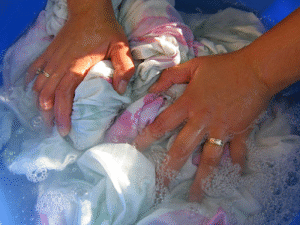
- Wash muslin in lukewarm or cold water with a gentle detergent on a gentle cycle.
- Air dry or place on a low heat in the dryer, removing while still slightly damp.
- Iron on low heat, or steam to remove wrinkles.
- Store muslin fabric in a cool, dry place, away from sunlight.
- If needed, gently blot stains with lukewarm water.
- As muslin is a fabric that shrinks, you may want to wash and dry it with caution.
- If you have really old muslin fabric, it can also be used for cleaning, craft items, or recycling once you can no longer use it.
Final Thoughts & Conclusion
Muslin fabric is a classic textile that is lightweight, breathable, and very adaptable. Muslin is made from loosely woven cotton fibres. Muslin is comfortable, durable, and provides a smooth texture that can work for virtually anything: baby swaddles, fashions, theater backdrops, and home décor. So, the next time someone asks, “What is muslin cloth used for?” remember it can be used for almost anything!
If you’ve ever wanted to make originality, eco-friendly baby products, DIY crafts, or sustainable fashion, muslin is a great fabric to start with because it is easy to work with, it’s affordable, and it’s so charming!
So if you are exploring muslin fabric or considering it for your next project, now is the perfect time to try it. Once you do, you’ll understand why this humble fabric has stood the test of time.

